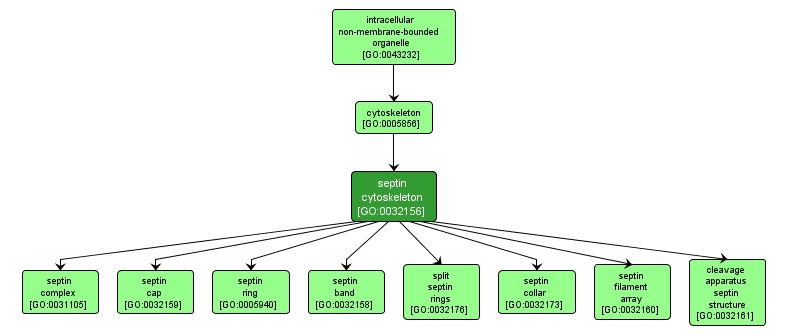GO TERM SUMMARY
|
| Name: |
septin cytoskeleton |
| Acc: |
GO:0032156 |
| Aspect: |
Cellular Component |
| Desc: |
The part of the cytoskeleton (the internal framework of a cell) composed of septins and associated proteins. Includes septin cytoskeleton-associated complexes. |
|

|
INTERACTIVE GO GRAPH
|














